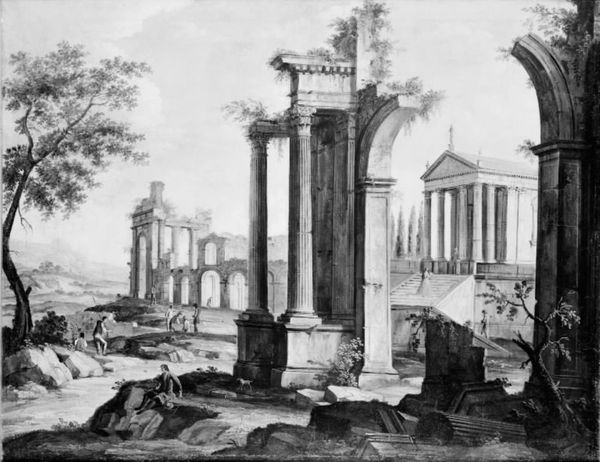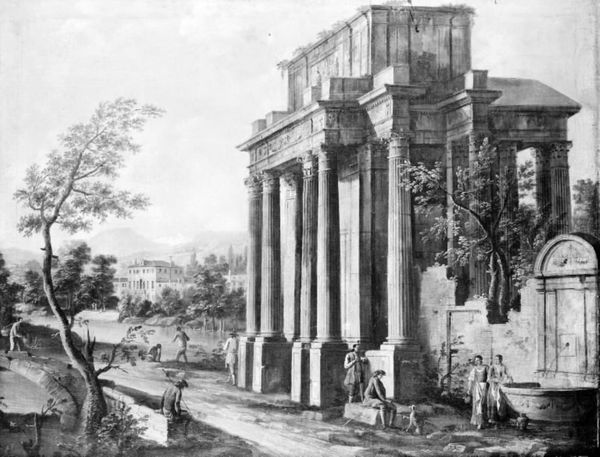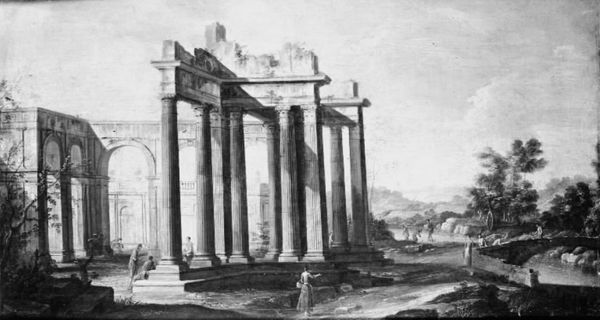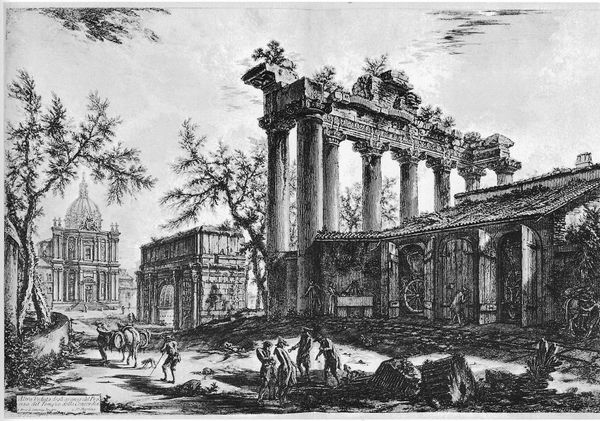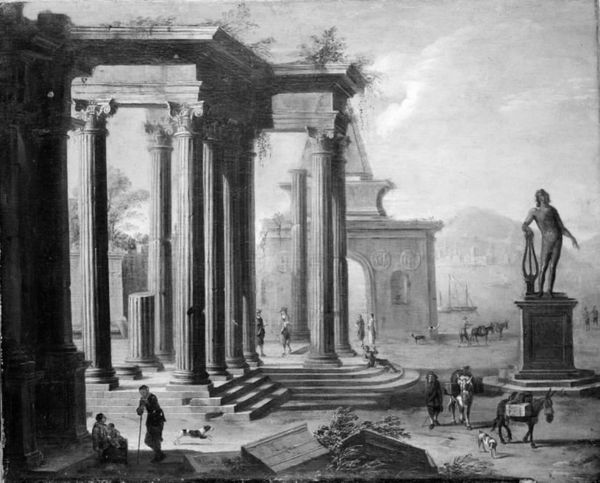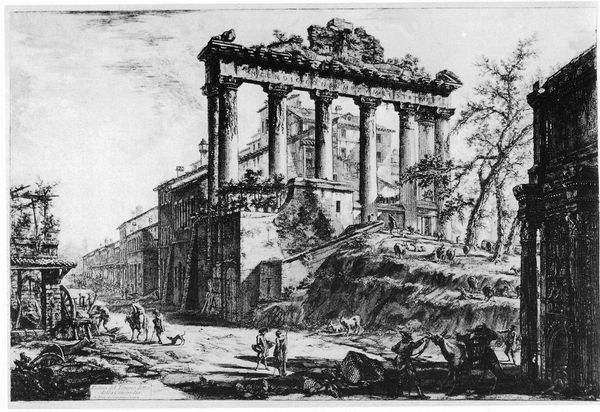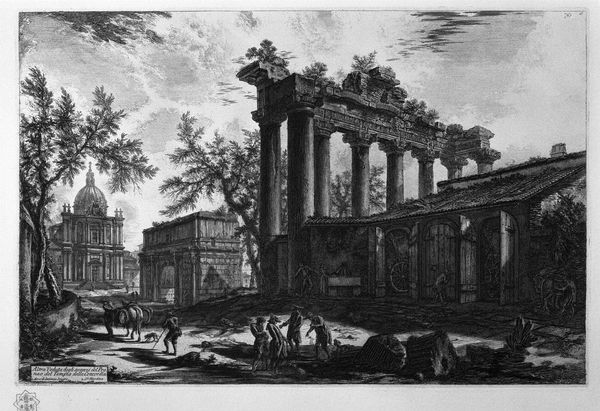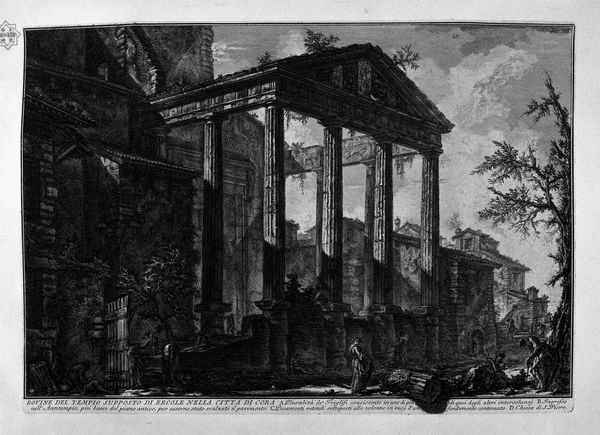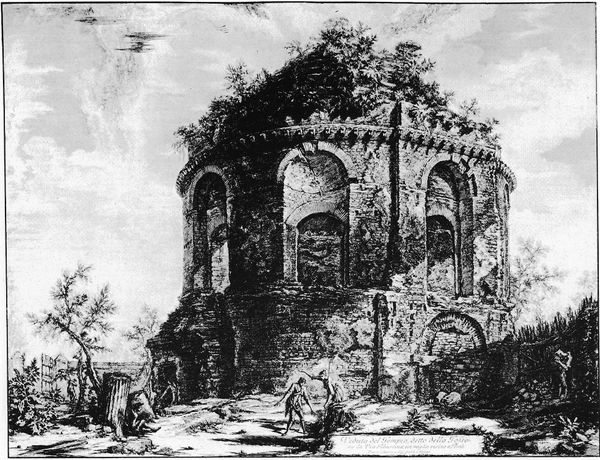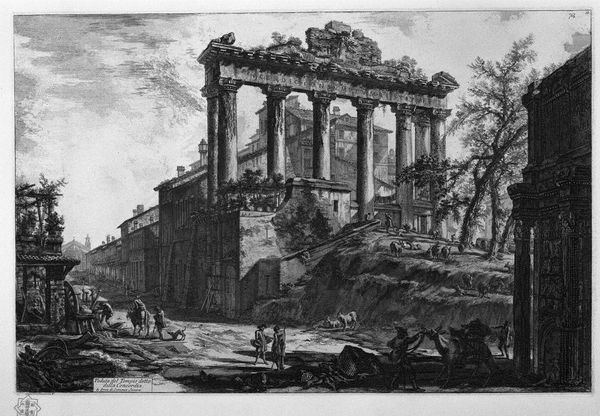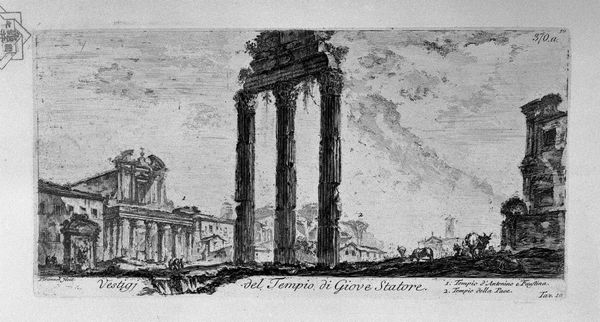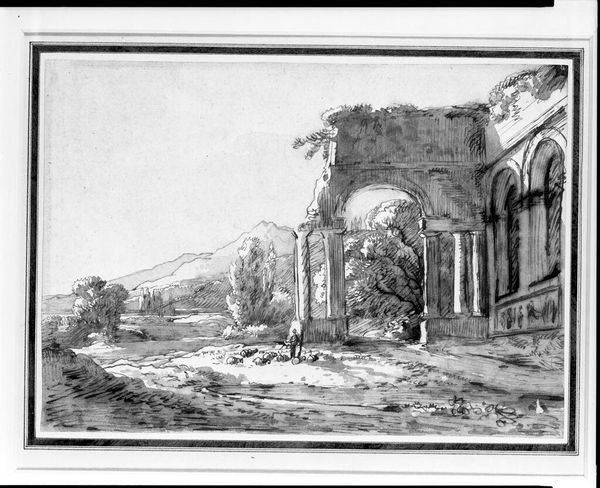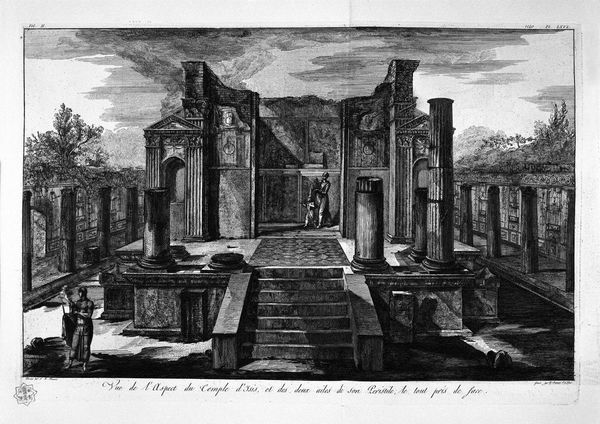
drawing, paper, ink, architecture
#
drawing
#
neoclacissism
#
landscape
#
classical-realism
#
paper
#
ink
#
history-painting
#
architecture
Dimensions: 105 cm (height) x 135 cm (width) (Netto)
Curator: I am immediately struck by the melancholic grandeur of this drawing. There is something haunting about these impossible monuments, especially rendered in such delicate shades of ink. Editor: Precisely. What we're looking at is "Imaginary Architectural Monuments" by Giovanni Antonio Cesari, a piece from between 1751 and 1800, held here at the SMK. It is a study in Neoclassicism rendered on paper, but, as you suggested, it’s not your typical triumphalist vision. Curator: Right. It is as if someone sketched their memory of ancient Rome rather than documenting it firsthand. The romantic landscape is just as striking to me as the classical monuments. A juxtaposition! Editor: That perceived romanticism can certainly be viewed through a social lens as a nostalgic vision for power and its representation via ancient civilizations. Note the groupings of people, perhaps arranged in society based on status. Cesari asks us to consider class structures in times gone by. Curator: I find it less prescriptive than that. See how the foliage creeps around the stones? The shadows swallow the bases of columns? These ruins feel as though they are being reclaimed, almost consumed by the very earth they sought to dominate. Nature, as per usual, laughs last. Editor: True, but let’s not forget the cultural moment that Cesari lived in: a pre-revolutionary world when class warfare had not become so apparent to European society. Still, Cesari appears to present that moment of being "swallowed," so to speak, which gives the artwork its revolutionary strength. Curator: That tension between power and entropy is why I keep coming back to this piece. On the one hand, you have this artistic assertion of dominance, of order and clean lines, with this underlying acknowledgement of inevitable decay. Editor: So well-stated, in both technical artistry and historic reference. And of course, in being preserved, the work itself continues its slow march toward some future state of entropic beauty. Curator: The irony is exquisite. A still moment—rendered beautifully in ink, by Cesari—in a state of constant change. It is why art exists, wouldn't you say?
Comments
No comments
Be the first to comment and join the conversation on the ultimate creative platform.

